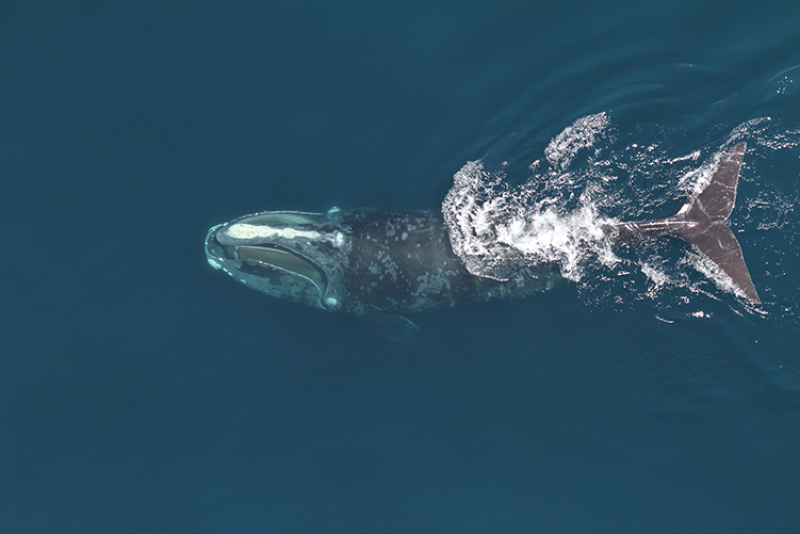A new study by Northeast Fisheries Science Center researchers provides data-driven guidance for using passive acoustic monitoring. This will allow us to more effectively detect North Atlantic right whales when they are present and calling in wind lease areas off southern New England.
"North Atlantic right whales’ calling rates vary widely depending on location, season, behavior, and other factors,” explained research acoustician and lead author Genevieve Davis.
“Having this information, which is specific to the Southern New England Wind Energy Area, is important for management with wind energy development underway.”
The study shows that when North Atlantic right whales are present and vocalizing, 1 hour of monitoring detected them 4 percent of the time. An 18-hour monitoring period detected them 75 percent of the time. Therefore, a minimum 24 hours of pre-construction passive acoustic monitoring would increase the likelihood of detecting a right whale if it is in the area and calling. The data also showed that once detected, whales remained in the area for 10 consecutive days on average, and recurred within 11 days.
Data on whale presence used in this study were collected by bottom-mounted acoustic recorders. They were deployed at six sites within or near nine lease areas for more than 2 years prior to construction in these lease areas. There are now 19 recorders deployed off southern New England.
This new information will help inform NOAA’s future decisions about incidental take authorizations off southern New England. Improving the effectiveness of real-time monitoring for protected animals in and around wind energy operations is significant. This tool will reduce the harmful effects of some activities on these animals.
This research supports NOAA Fisheries’ overarching North Atlantic Right Whale Road to Recovery. This strategy describes our efforts to address threats to the species and halt the current population decline.
The paper, “Upcalling behaviour and patterns in North Atlantic right whales, implications for monitoring protocols during wind energy development," was published as part of a special theme issue of the ICES Journal of Marine Science. The issue focused on assessing the impacts of expanding offshore wind energy.


